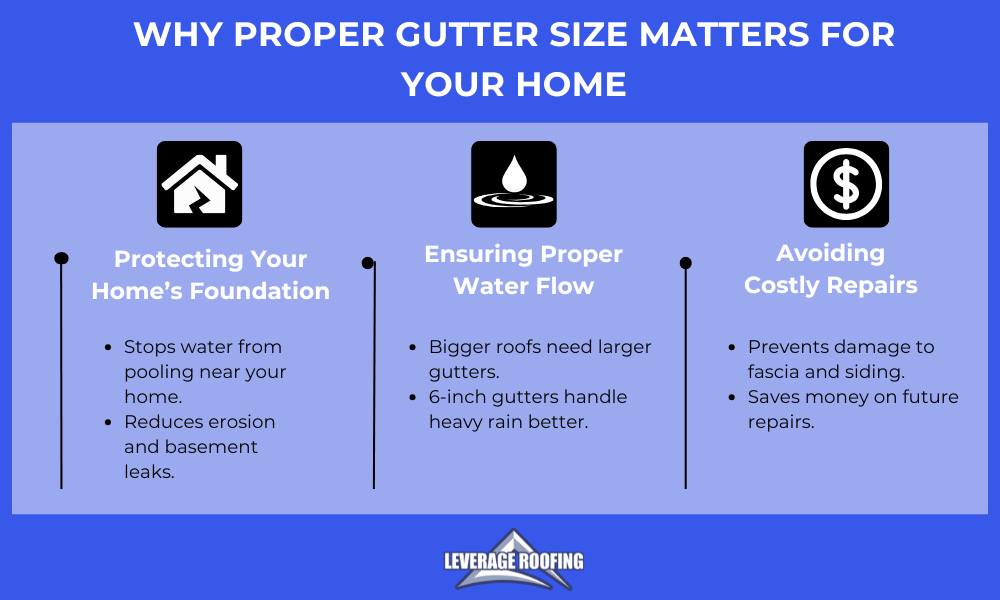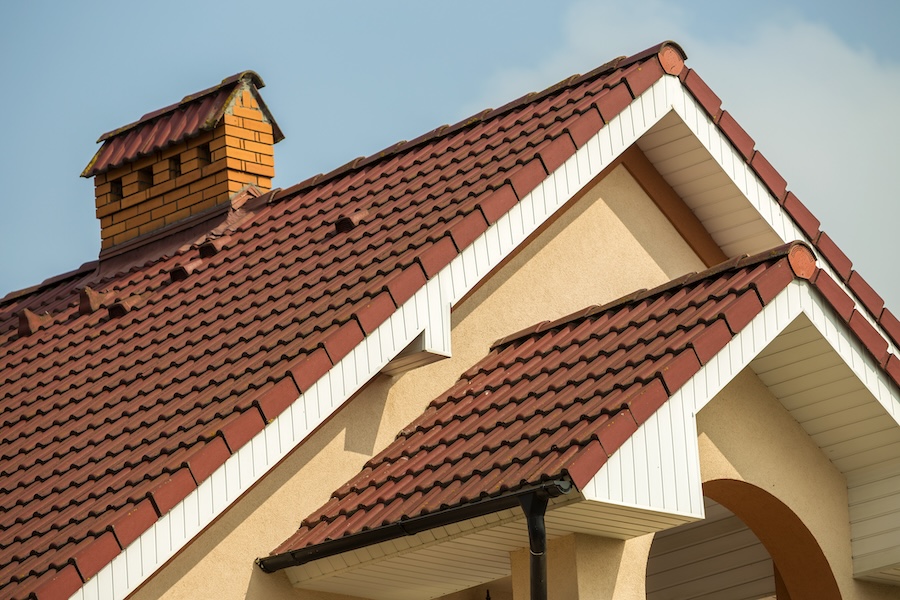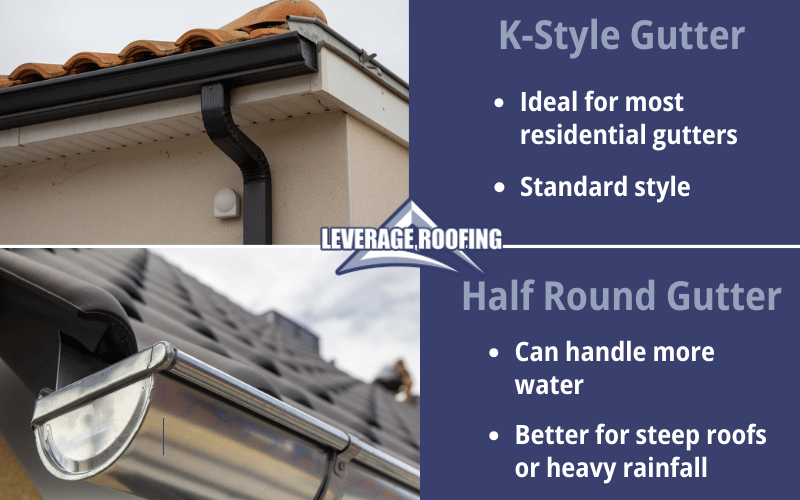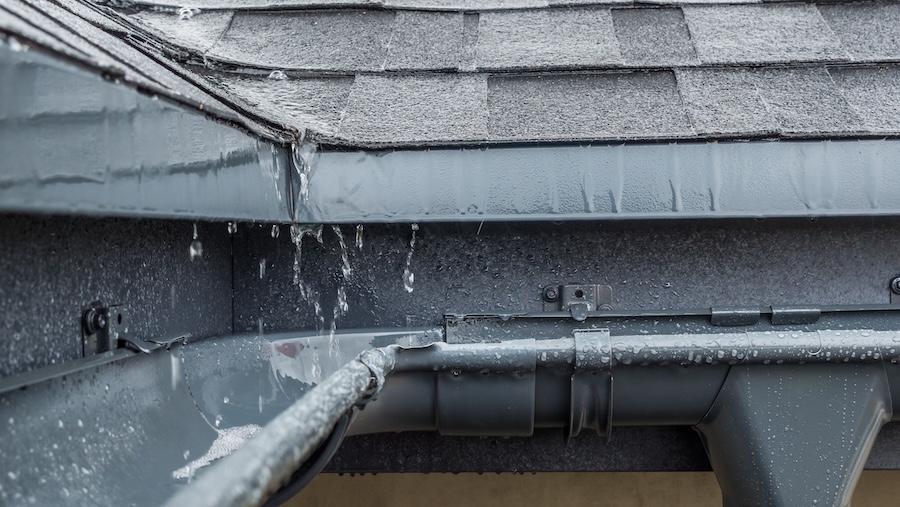When it comes to protecting your home, choosing the right gutter size might not sound glamorous, but it’s one of the most important decisions you can make. Gutters do the heavy lifting of channeling water away from your home’s foundation, walls, and landscaping. If they’re too small, water overflows and causes damage. Too big? You might be overspending on something you don’t need.
So how do you figure out the correct gutter size for your home? It’s not as simple as picking a random size off the shelf. It involves looking at your roof pitch, total square footage, local rainfall intensity, and even the type of gutter system you want.
Let’s break it down step by step so you can choose the proper size gutter for your home and avoid costly water damage.

Why Gutter Size Matters
Protecting Your Home’s Foundation
Your gutters aren’t just decorative trim along your roof edge. They’re your home’s first line of defense against water damage. When gutters can’t handle the volume of water during heavy rainfall, that water spills over, saturates the soil, and seeps into your foundation. Over time, this can lead to erosion, basement leaks, and structural issues.
Choosing the right gutter size keeps water moving where it should: safely away from your home.
Ensuring Proper Water Flow
The goal of any gutter system is simple—control water flow. Undersized gutters can’t keep up with storms, and that’s especially true if you have a steeper pitch or larger roof. A roof with a sharp slope channels water faster, which means the gutter needs more capacity. That’s why 6-inch gutters are often the go-to for bigger roofs or areas with frequent heavy rainfall.
Smaller, standard gutter sizes like 5-inch K-style gutters work fine for modest homes in mild climates. But if you’ve got a metal roof or a hip roof with multiple slopes, you’ll want to size up.
Avoiding Costly Repairs
Overflowing gutters don’t just damage foundations. They can wreck siding, landscaping, and even your roof structure. Water that backs up behind your gutters can rot the fascia boards and lead to leaks. Picking the right gutter size now saves you from paying thousands later.

Key Factors in Choosing the Correct Gutter Size
1. Calculate Roof Square Footage
Start with your roof area, because that’s where all the water comes from.
Step 1: Break your roof into sections for easier measurement.
Step 2: Measure the length and width of each section.
Step 3: Multiply length × width to get square foot measurements for each section.
Step 4: Add them up to get the total square footage of your roof.
Why does this matter? Bigger roof = more water = bigger gutters.
2. Factor in Roof Pitch
Your roof pitch changes everything. A steep slope sends water down faster, which means a higher water flow rate into the gutters.
To measure pitch:
- Use a level and tape measure.
- Place the level on the roof and measure how many inches it rises over a 12-inch run.
- For example, a 6-inch rise over 12 inches means a 6/12 pitch.
Multiply your total square footage by a pitch factor (from a roof pitch factor chart) to get the adjusted drainage load.
3. Check Rainfall Intensity
Your local rainfall intensity matters, too. According to the National Weather Service, regions with frequent downpours need bigger gutters. If you live in an area with heavy rainfall, 6-inch gutters or even an auxiliary gutter may be the safest bet.
Sizing Gutters and Downspouts
Once you have your adjusted square footage, you can pick the proper size gutter. Here’s a quick guide:
- Standard gutter size: 5-inch K-style works for most homes under normal rain conditions.
- Larger roofs or steep pitches: Go with 6-inch gutters for more capacity.
- Downspout size: Pair your gutters with appropriately sized downspouts—bigger gutters need bigger downspouts to keep water moving.
Pro tip: A single downspout usually handles about 600 square feet of roof area for a standard gutter size, but always verify based on your local conditions.

Common Gutter Styles and Sizes
K-Style Gutters
The most popular choice for modern homes. Why? They handle more water than a rounded gutter of the same width.
- 5-inch K-style gutter: Perfect for smaller homes and lighter rainfall.
- 6-inch K-style gutter: Handles the largest gutter volume in residential setups. Best for larger roofs, steeper pitches, or areas with heavy rainfall.
Half-Round Gutters
These have a classic look, often used on older or historic homes. They’re smooth inside, which improves water flow, but they don’t hold as much as K-style gutters. If you like the look and live somewhere with moderate rain, they’re a solid option.
Gutter Guards
No matter what size gutter you choose, consider adding a gutter guard. It helps keep debris out, so your gutter system stays efficient during storms. Plus, it reduces maintenance.
Advanced Gutter Sizing Tips and Best Practices
What About Metal Roofs?
Got a metal roof? These surfaces shed water much faster than traditional asphalt shingles because they’re smooth and have less friction. That means when the rain comes down, especially during heavy rainfall—water moves into the gutters at a higher speed and in greater volume.
For homes with metal roofing, it’s smart to size up your gutters to at least 6-inch gutters or even consider adding an auxiliary gutter to handle overflow in key areas. Pairing larger gutters with a properly matched downspout size helps maintain efficient water flow, preventing overshooting and potential water damage around your foundation and landscaping.
Standard Gutter Sizes vs. Custom Sizing
Most homes use standard gutters: 5-inch or 6-inch. But if you’ve got a unique setup—like a hip roof, book gutter layout, or commercial building—you might need custom sizing gutters for maximum performance. Pair them with the correct downspout size to keep things flowing.
Common Mistakes to Avoid
- Assuming one size fits all: A standard gutter size might not cut it if you have a big house or live where storms hit hard.
- Ignoring roof pitch: A steeper pitch means more water flow. Don’t skip this step.
- Using too few downspouts: Even the best gutter won’t work if water has nowhere to go.
- Skipping gutter guards: Clogs kill gutter performance. A gutter guard keeps things moving.
Quick Reference: When to Size Up
- Heavy rainfall area? Go 6-inch.
- Large roof or complex shape? Go 6-inch.
- Steep roof pitch? Go 6-inch.
- Metal roof? Go 6-inch or add secondary fill like an extra downspout.

Partner with Leverage Roofing for the Right Gutter Size
Choosing the right gutter size isn’t just about grabbing the biggest option at the store. It’s about finding the perfect balance for your home’s roof area, roof pitch, and rainfall intensity. That’s where we come in.
At Leverage Roofing, we install K-style gutters, half-round options, and seamless systems for a clean look and strong performance. We’ll make sure your gutters, downspout size, and gutter width match your home’s needs so you never have to worry about overflow or water damage again.
We also install gutter guards, so your gutter system stays clear and efficient. Whether you’re a home a homeowner replacing old gutters or planning a new commercial build, our team handles it all—from precise measurements to professional installation.
Ready to upgrade your gutters? Contact Leverage Roofing today for a free quote and let us help you choose the proper size gutter for your home.


